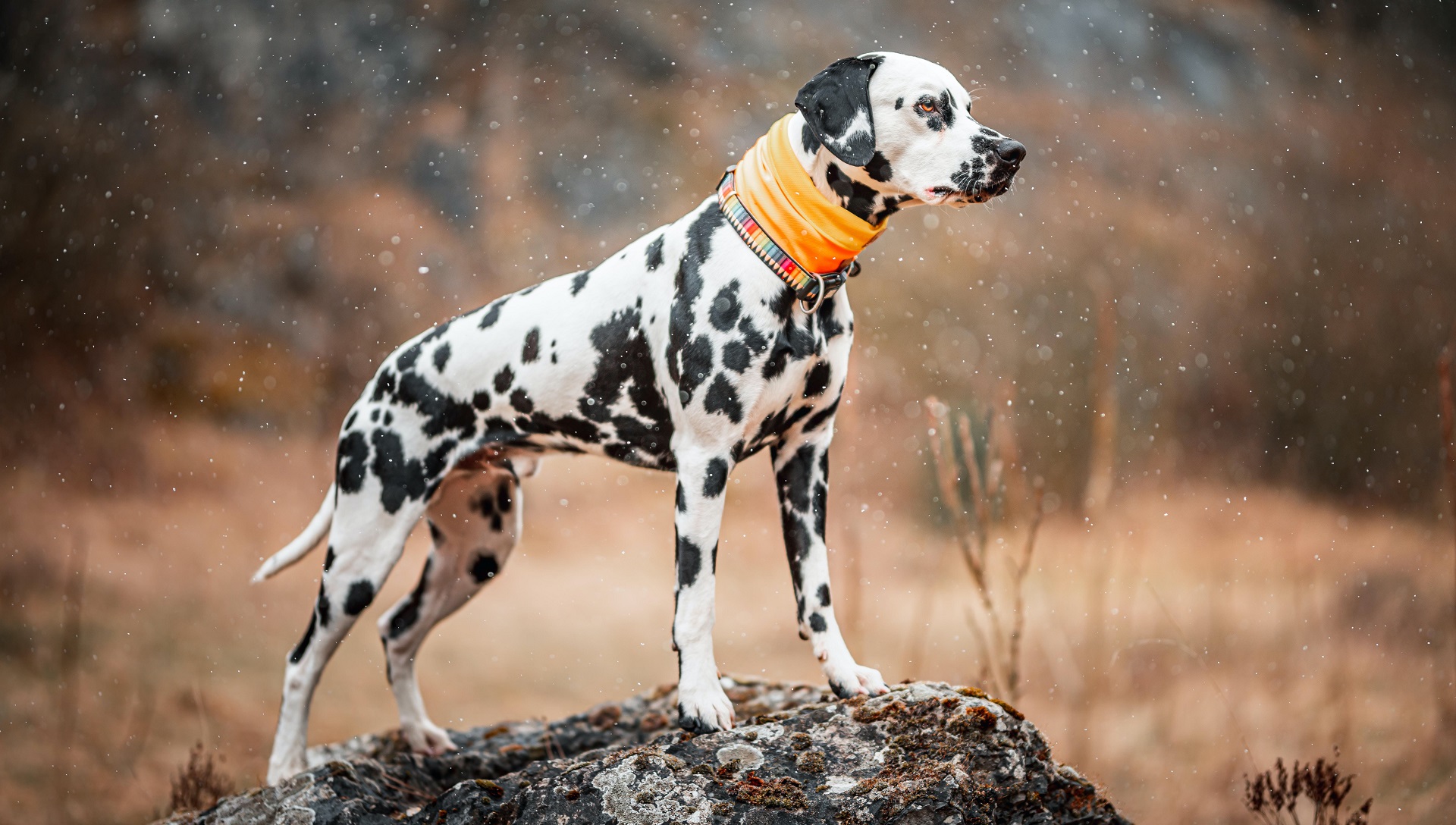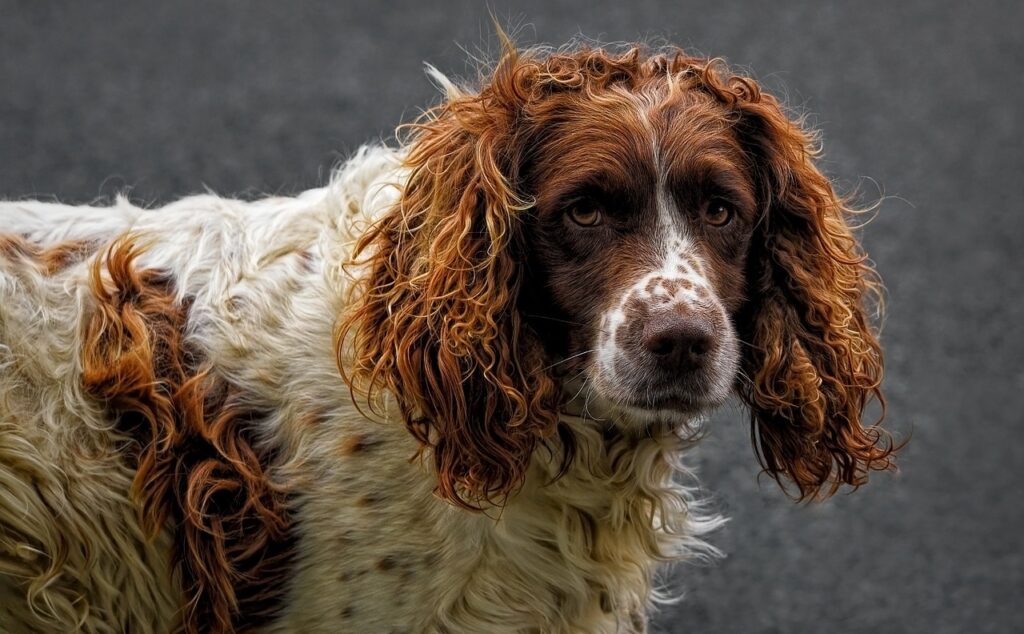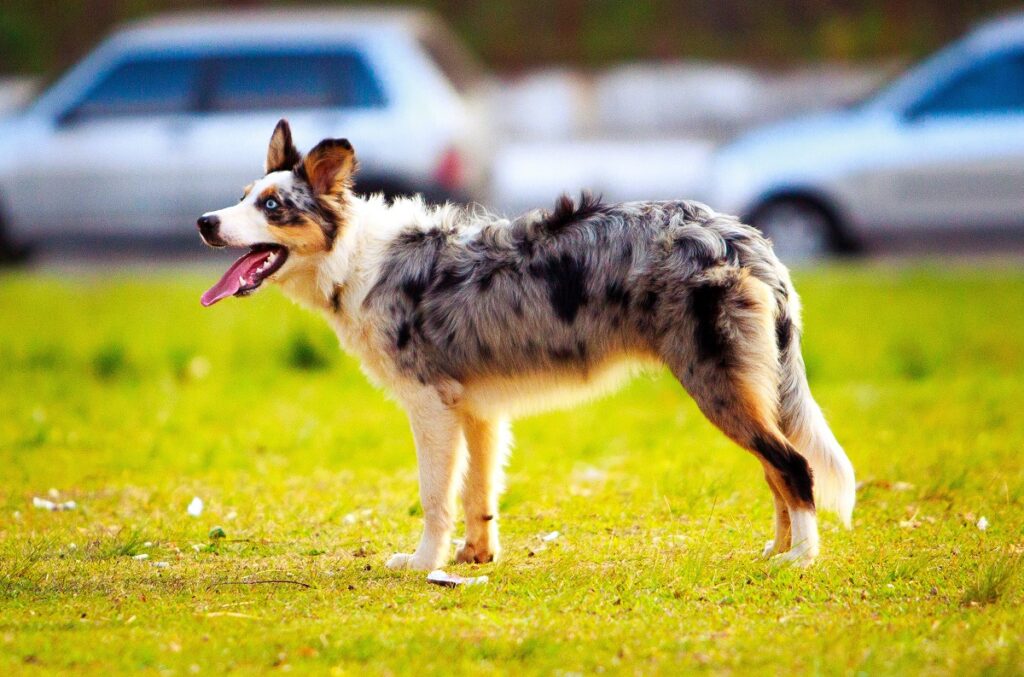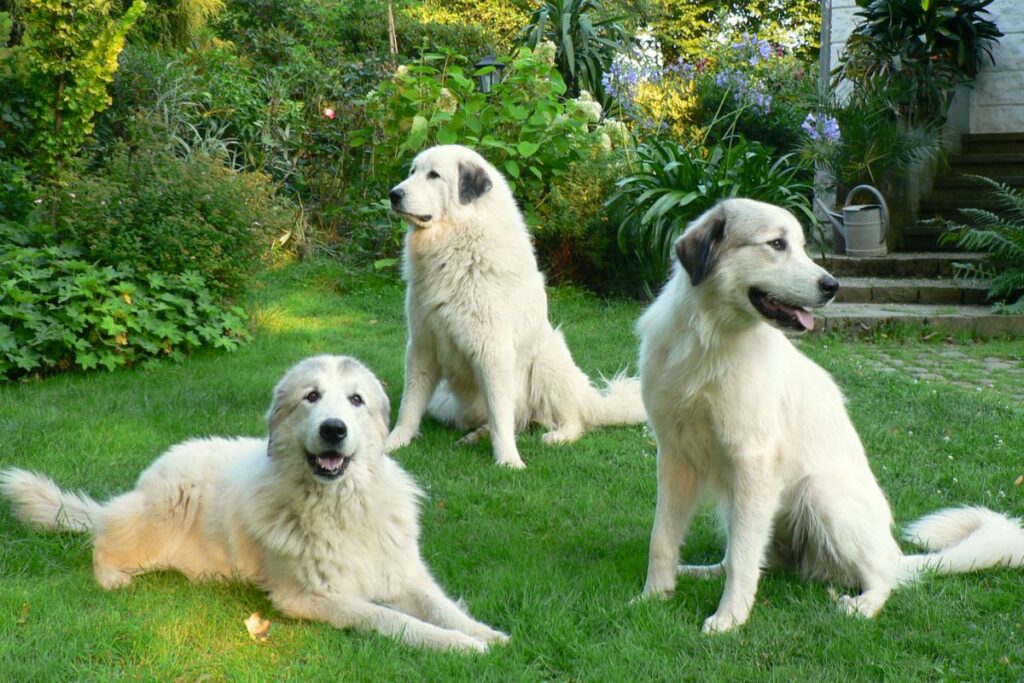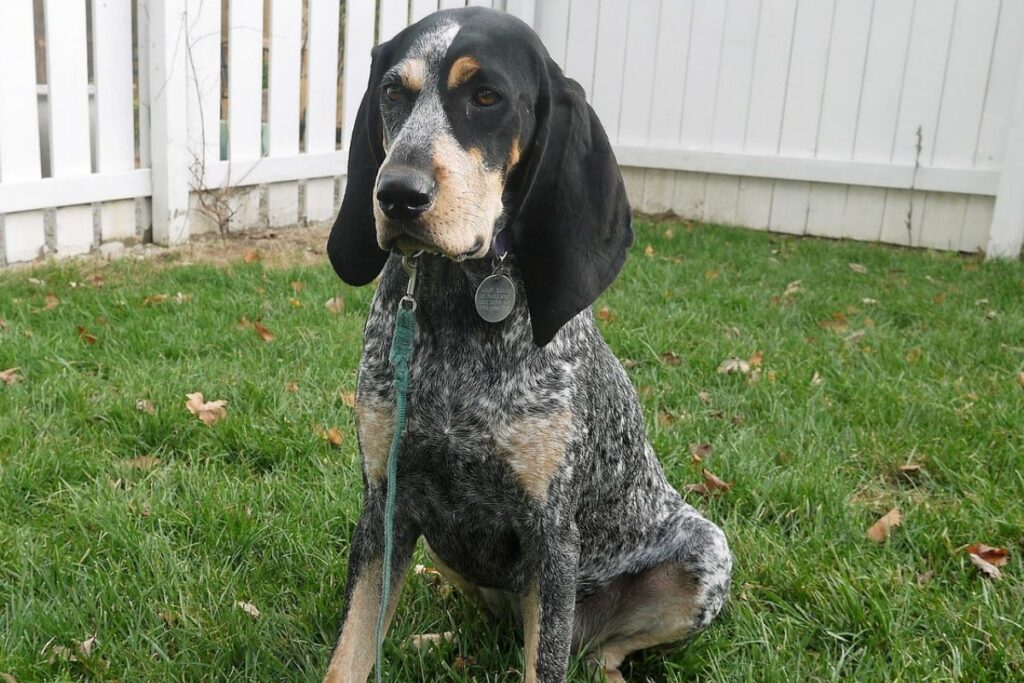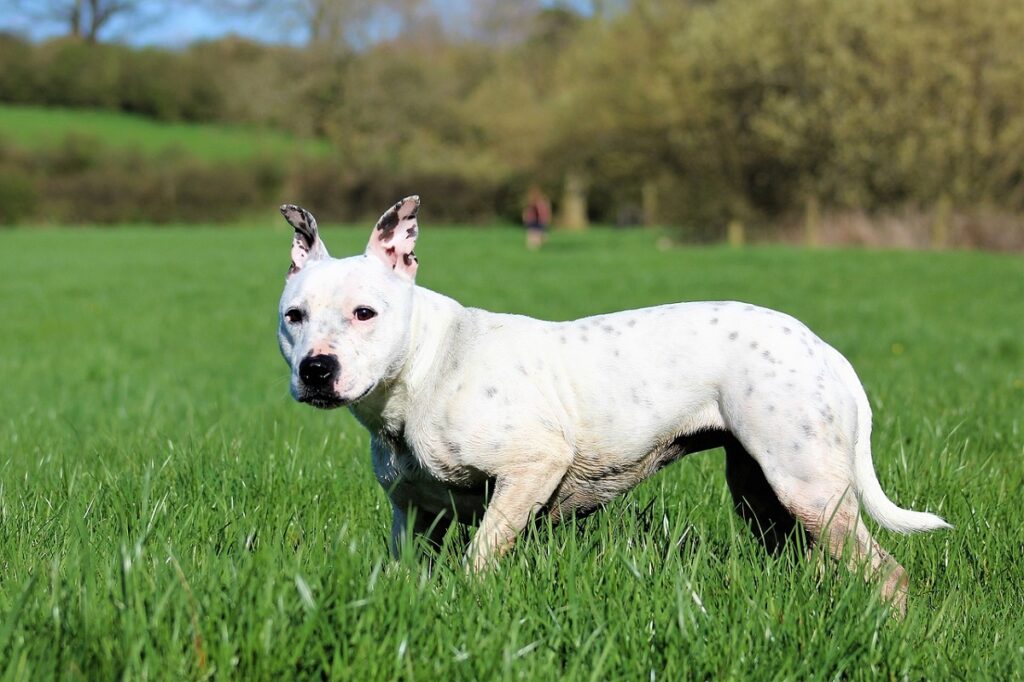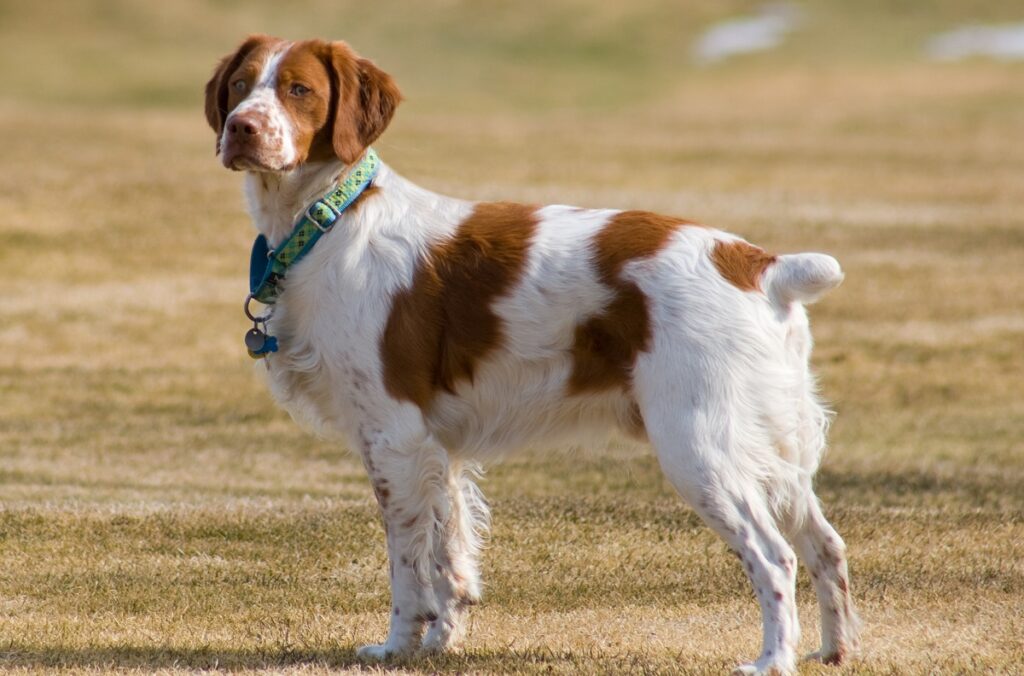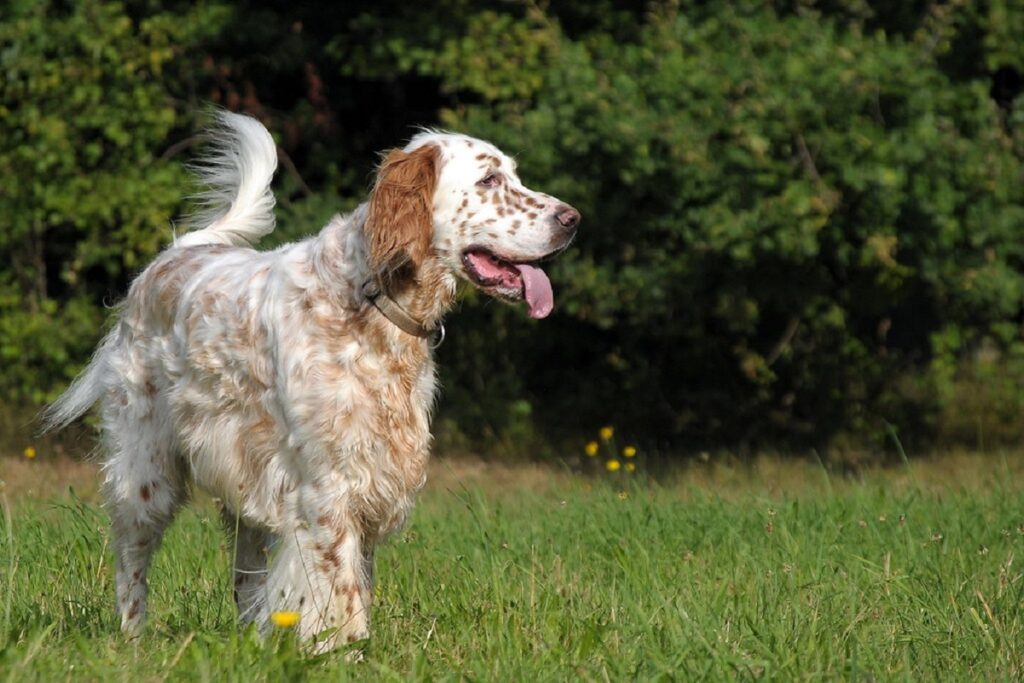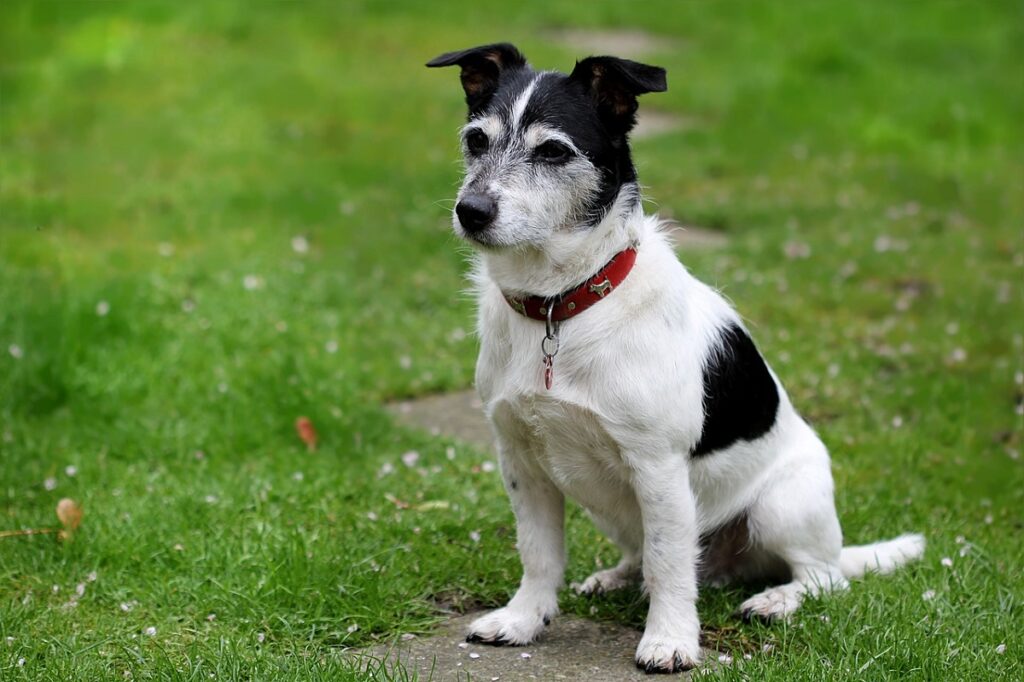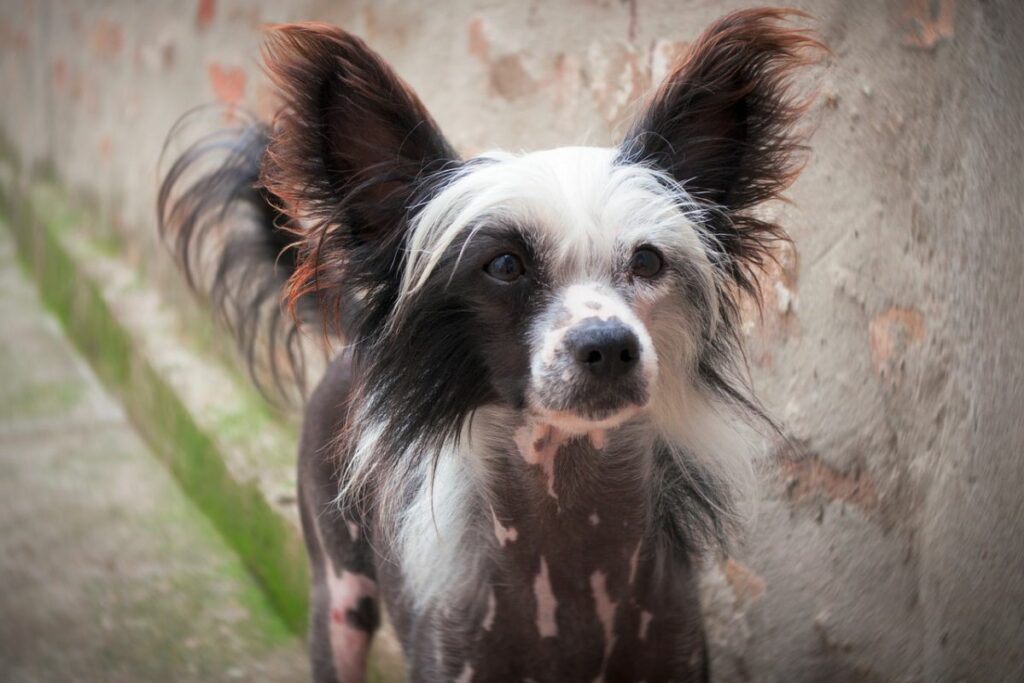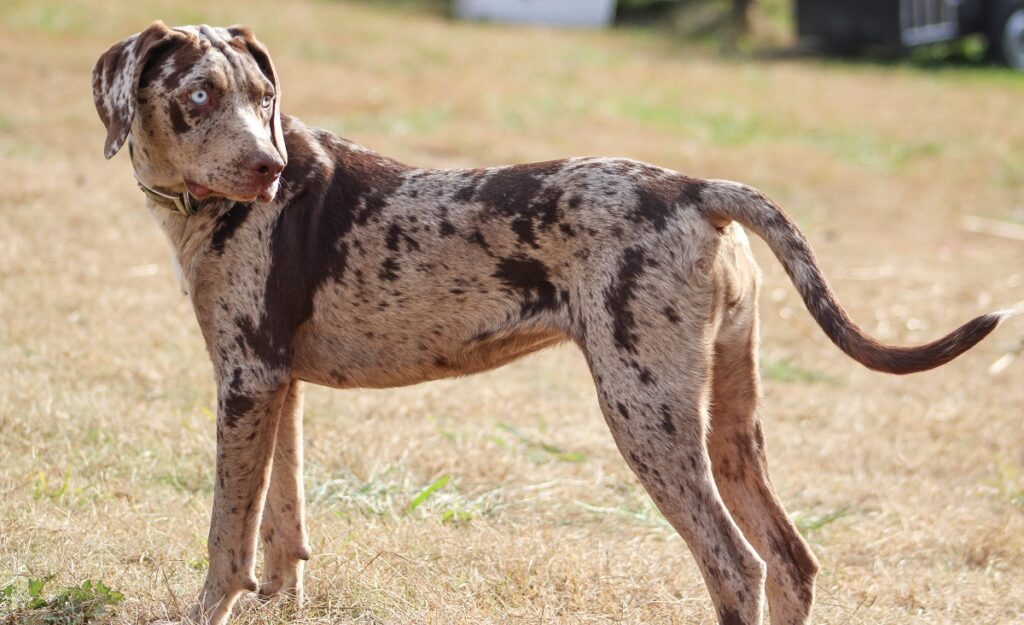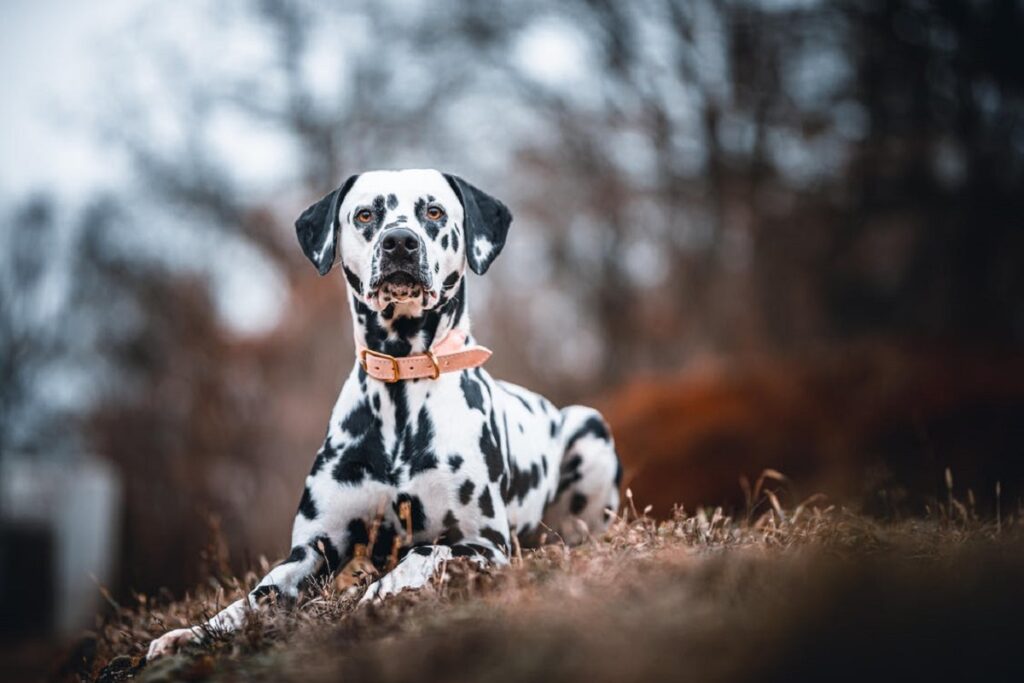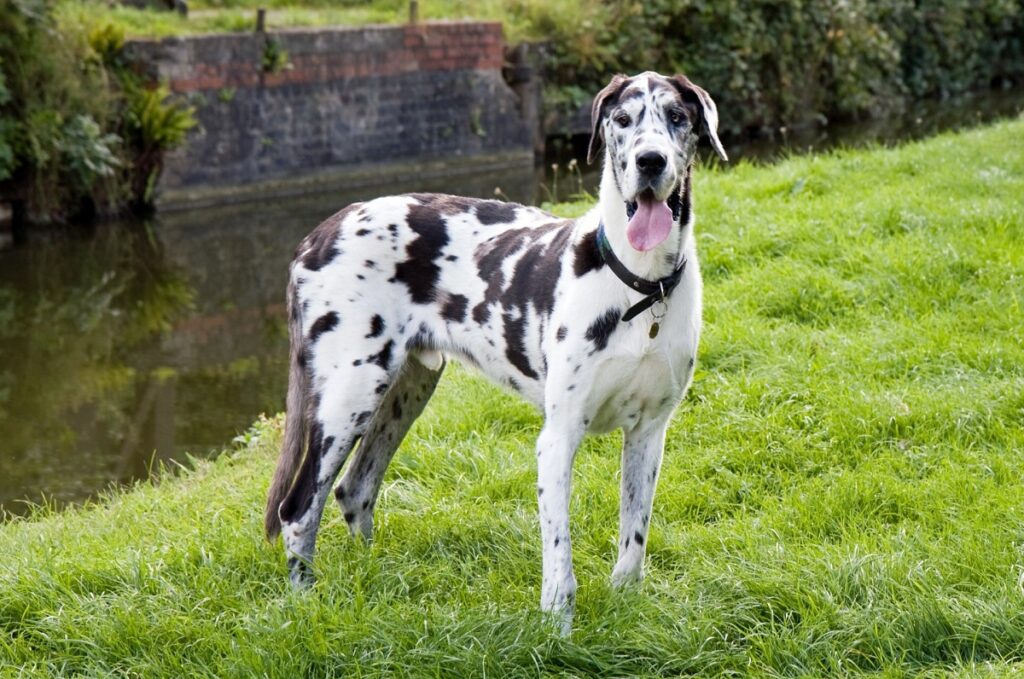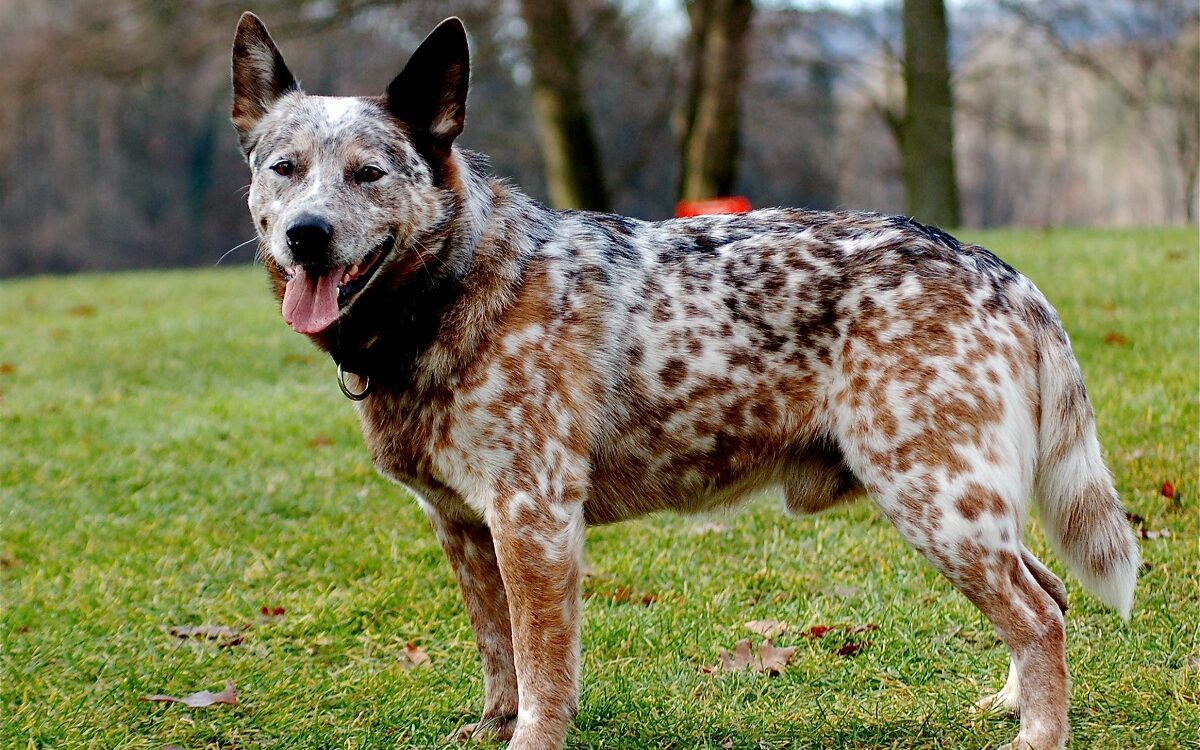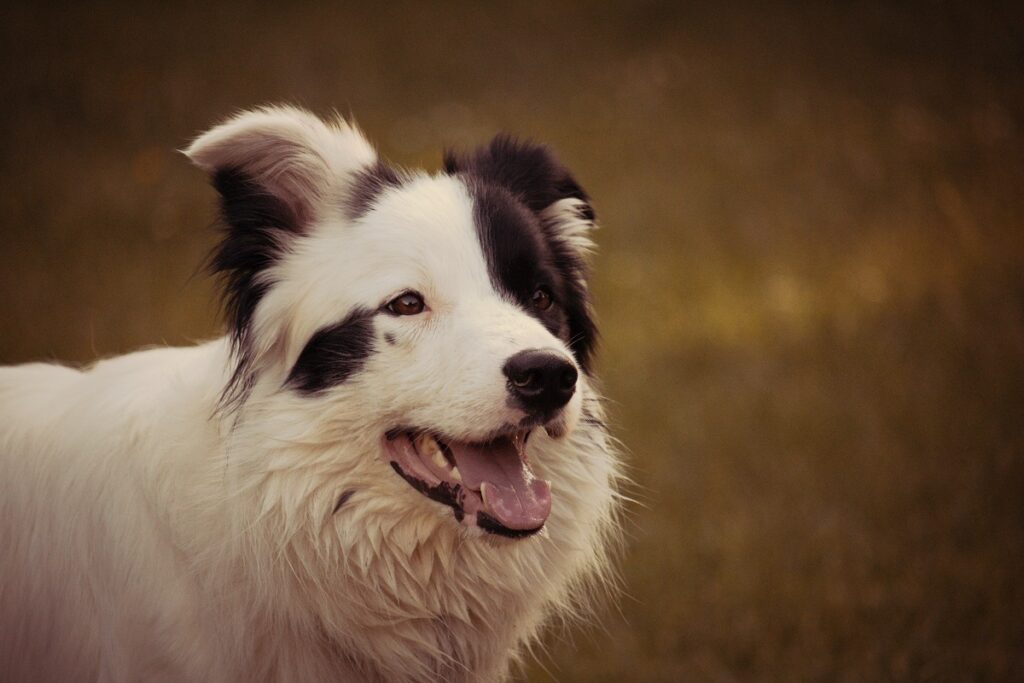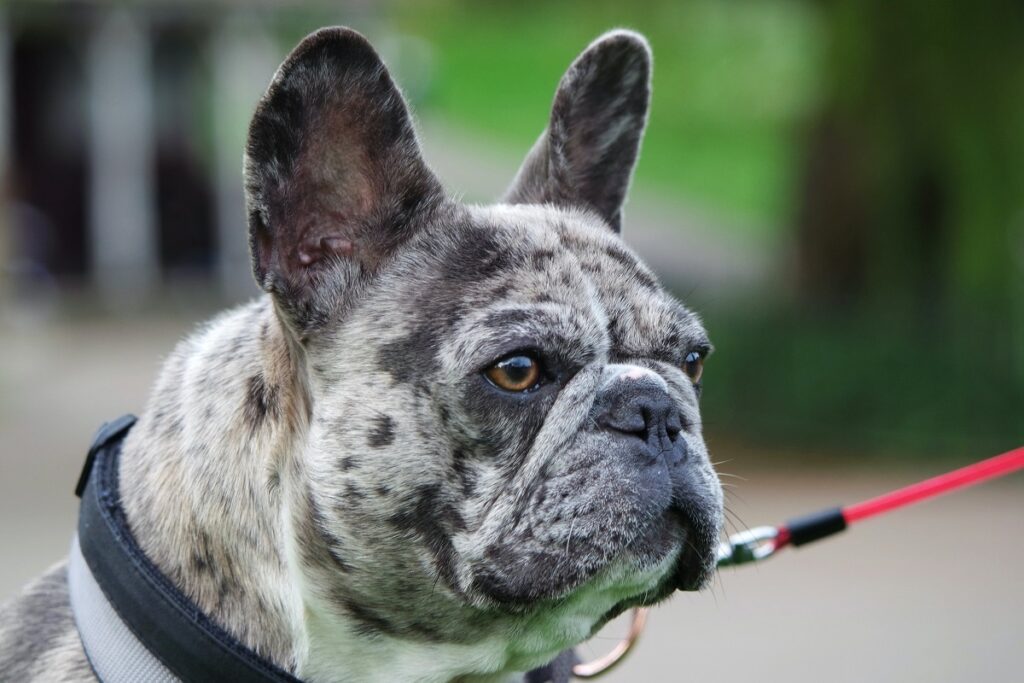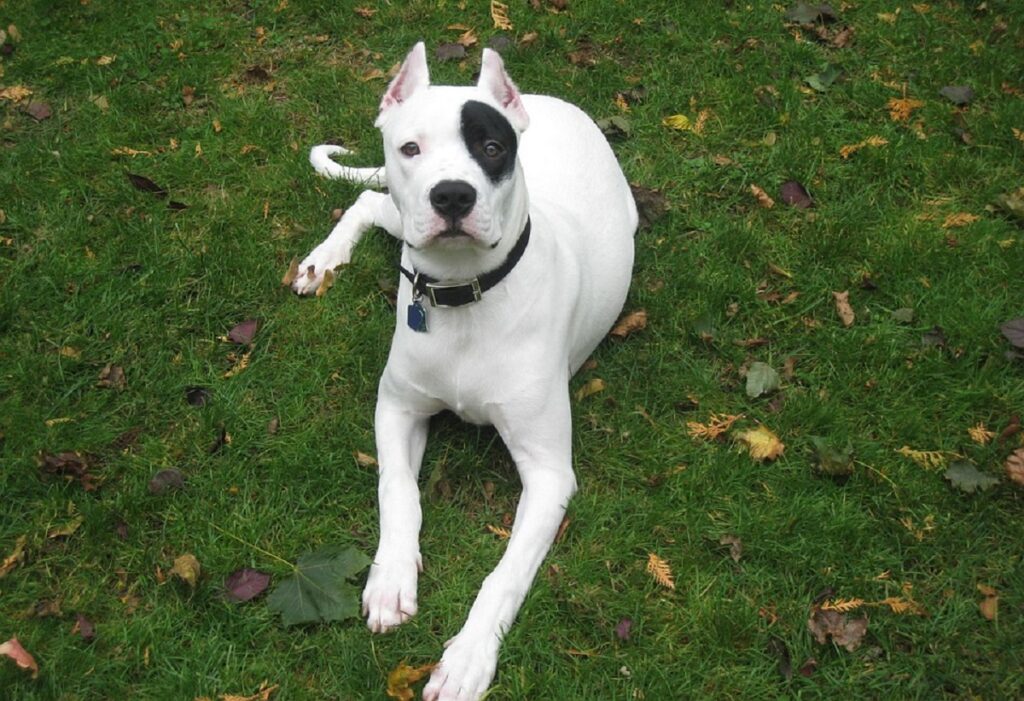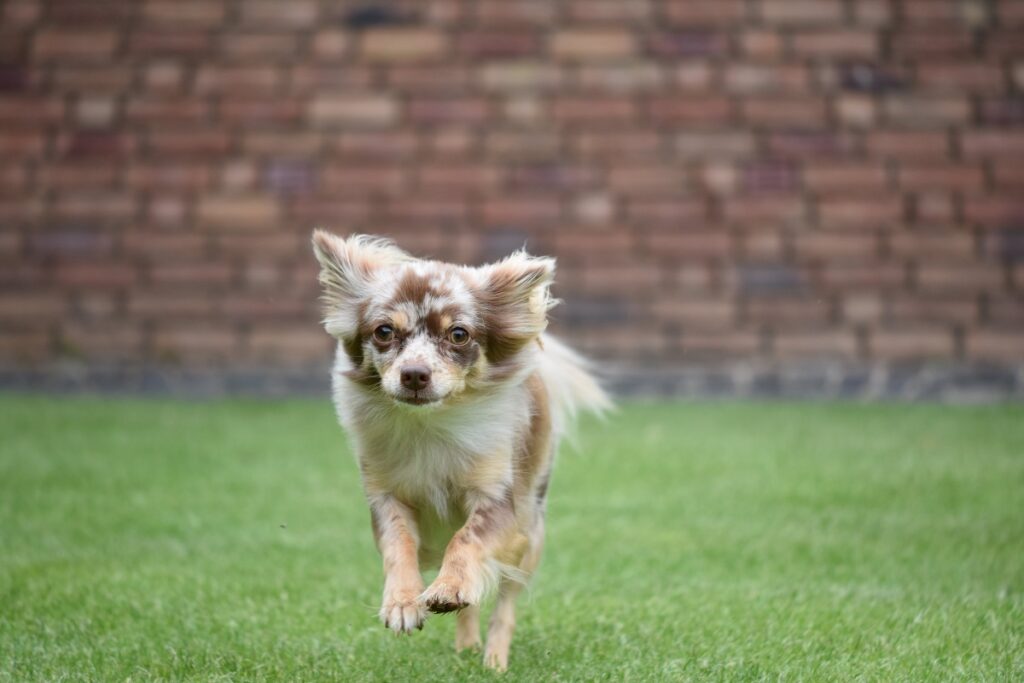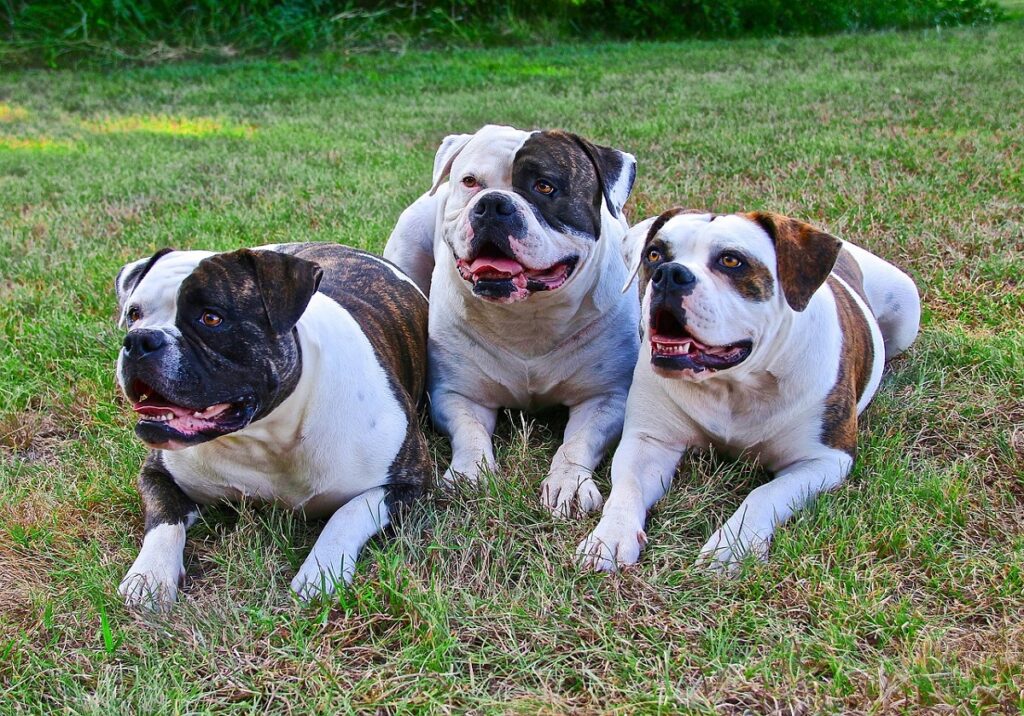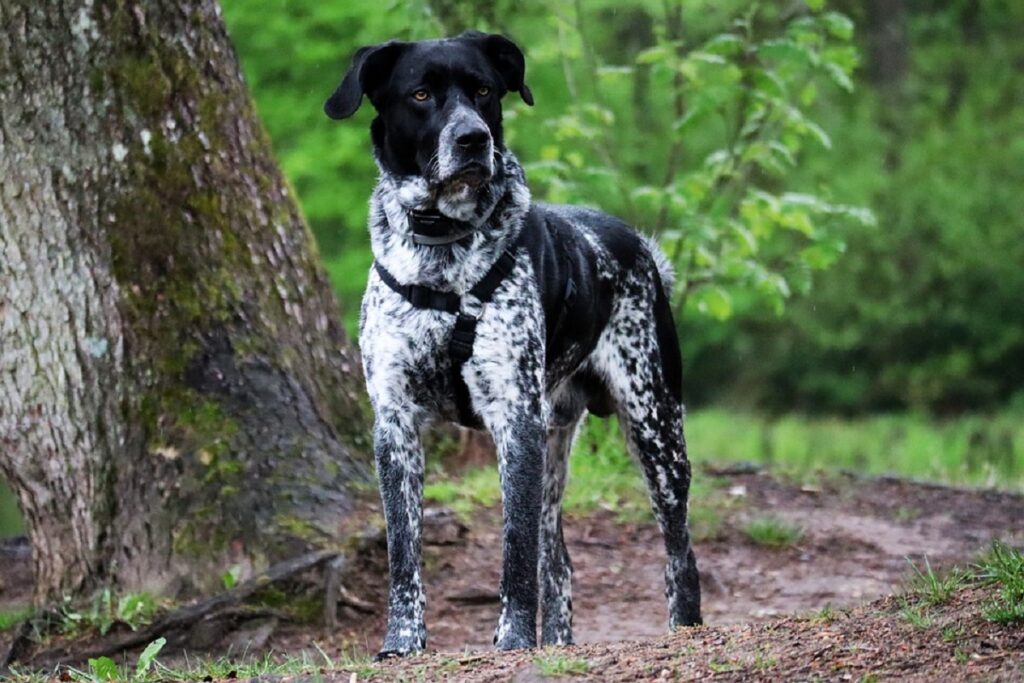From the dapper Dalmatian to the quirky Bluetick Coonhound, spotted dogs steal hearts with their unique and eye-catching coats. But beyond their beautiful markings, these 21 breeds boast a diverse range of personalities, skills, and histories. Whether you’re drawn to a playful pointer or a loyal guardian, this exploration of spotted breeds will unveil what makes each one special, highlighting their temperaments, care needs, and fascinating origins. Discover your perfect spotted companion within!
When you think of spotted dog breeds, do you picture a Dalmatian? Did you know that there are actually 20 other spotted dog breeds?
The other spotted breeds have different coat patterns, including ticked, speckled, mottled, merle/dapple, bicolor, tricolor, sable (light fur with black tips like a German shepherd), mantle (like a blanket), piebald, patches, and even brindle patches. The variety is endless.
Welcome to the wonderful world of spotted dogs!
Spotted Dog Breeds
Spotted dogs differ a great deal in coat patterns. From large patches to ticked and spots in a variety of colors, shapes, and sizes. Buckle in, and we’re going to fill you in on all the types of patterns, possibilities, and the terminology of spotted dogs.
1. English Springer Spaniel
| GROUP | Sporting group |
| INTELLIGENCE | Very high |
| BARKING | Moderate |
| LIFESPAN | 12-14 years |
The lovely English Springer Spaniel is affectionate, energetic, polite, very trainable, playful, obedient, good with kids and other dogs, and needs mental stimulation. English springer spaniels love being with their family, going for long walks, chasing, fetching, and swimming.
English springer spaniels come in black and white, black, white, and tan, liver and white, liver, white, and tan, white and liver, white and black, red and white, orange and white, or lemon and white. They have black or brown spots on their white coat.
Fun fact: They develop more spots as they get older.
2. Australian Shepherd
| GROUP | Herding group |
| INTELLIGENCE | Very high |
| BARKING | Frequent |
| LIFESPAN | 12-15 years |
Beautiful Australian shepherds are hard workers, very trainable, energetic, playful, exuberant, good with children, and they need stimulus. This dog with a spotted coat loves to work and is one of the most intelligent dog breeds.
Not every Australian shepherd has spots because it depends on the merle coat gene, so if they aren’t merle — no spots. The Australian shepherd can be black, blue merle, red, or red merle. Blue merle Aussies have black, blue, or brown spots on their gray fur that darken with age.
The Merle gene determines how color appears in a dog’s coat. Australian shepherds‘ luxuriant medium-length coats are usually a mix of brown and white and need regular grooming. These beauty queens and handsome kings also have blue eyes.
3. Great Pyrenees
| GROUP | Working group |
| INTELLIGENCE | Not very obedient |
| BARKING | Moderate |
| LIFESPAN | 10-12 years |
Gorgeous Great Pyrenees are patient, affectionate, protective, powerful, and calm. They were bred to protect sheep from wolves. These majestic and waterproof dogs are mellow until they need to protect, at which time they will jump up and address the issue.
There are many photos of sweet Pyrs protecting farm animals with chicks, goats, and others climbing all over the unfazed huge fluff balls. The Great Pyrenees have a white coat, which may have patches of black, gray, reddish brown, or tan spots.
There are many ways to measure a dog breed’s intelligence: how long it takes for them to learn a command, their emotional intelligence, instincts, etc. Some dogs, like the Great Pyrenees, aren’t interested in obeying commands, so they may not do well on doggy intelligence tests.
Maybe these types of dogs are smarter than we are because they know they can choose free will over obedience.
4. Bluetick Coonhound
| GROUP | Hound group |
| INTELLIGENCE | High |
| BARKING | Frequent |
| LIFESPAN | 11-12 years |
The adorable Bluetick Coonhound is playful, affectionate, very trainable, muscular, energetic, speedy, and good with dogs. They are excellent hunting companions and still have the instinct to chase. The Bluetick coonhound makes a lot of bawling and baying sounds that neighbors may not enjoy and only their human family can tolerate.
The Bluetick coonhound is blue-ticked or blue-ticked and tan. Ticking is a pattern of spots or flecks on white fur, so there are a lot of tiny spots.
This breed is better for more experienced dog owners because they are stubborn and independent.
There are 6 types of coonhounds: the American English coonhound, the Black and Tan coonhound, the Treewalker coonhound, the Redbone coonhound, the Plott coonhound, and the Bluetick coonhound.
5. Staffordshire Terrier
| GROUP | Terrier group |
| INTELLIGENCE | High |
| BARKING | A little more than average |
| LIFESPAN | 12-16 years |
The sweet Staffordshire Terrier is affectionate, playful, friendly, confident, and protective. American Staffordshire terriers have smooth coats and many coat colors, as well as many spot colors.
Their fur can be black, white, brown, blue, fawn sable, blue fawn, red brindle, blue fawn brindle, liver, black brindle, fawn brindle, blue brindle, liver brindle, fawn, red, seal brown, red sable, and brown brindle.
The Staffordshire terrier has dark spots that look like doggy freckles on their white fur.
6. Cocker Spaniel
| GROUP | Sporting Group |
| INTELLIGENCE | High |
| BARKING | A little more than average |
| LIFESPAN | 10-14 years |
Cutie pie Cocker spaniels are happy, affectionate, gentle, friendly, energetic, good with kids and dogs, and very trainable. Cocker Spaniels are great for first-time dog owners because they are very easy going.
Cocker spaniels are typically white with either gold or black spots. One of the coat patterns of the Cocker spaniel is roan, which means an even mix of white and pigmented hairs that do not “gray out.”
The Cocker spaniel’s spotted coat comes in many colors: black, black and tan; silver; buff; red; brown; brown and tan; black and white; red and white; buff and white; brown and white; black, white and tan; brown, white, and tan; golden; blue roan; blue roan and tan; sable; sable and white; cream; red roan; brown roan; and brown roan and tan.
The English Cocker spaniel differs from the American Cocker spaniel in that the American has a shorter muzzle, smaller ears, and a more dome-shaped head.
7. Wirehaired Pointing Griffon
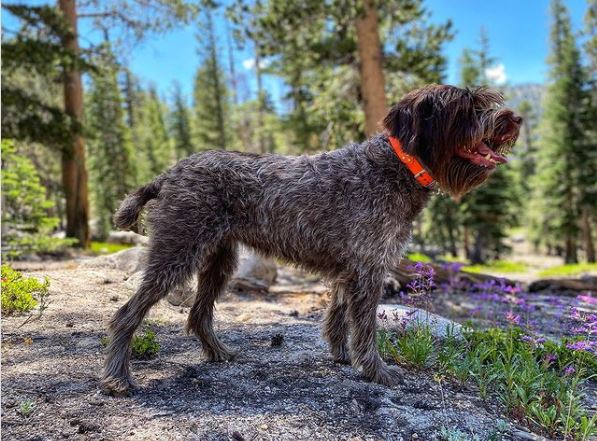
| GROUP | Sporting group |
| INTELLIGENCE | High |
| BARKING | A little more than average |
| LIFESPAN | 10-15 years |
The wirehaired pointing griffon is a shaggy cutie that’s affectionate, very trainable, friendly, devoted, energetic, playful, good with children and needs mental stimulation. They are known as the “supreme gun dogs” and are great hunting companions.
Their spotted coat is brown and gray, chestnut and gray, white and brown, white and orange, white, brown, and chestnut. Their spots are tick patterns and roan-colored.
8. Brittany Spaniel
| GROUP | Sporting Group |
| INTELLIGENCE | High |
| BARKING | A little more than average |
| LIFESPAN | 12-14 years |
The beautiful Brittany Spaniel is playful, very trainable, energetic, good with kids and dogs, and needs mental stimulus. They have a white coat with tick or spotted markings.
Colors include liver and white; liver roan; liver, white, and orange; orange and white; orange roan, white and liver; white and orange; black and white; black, white, and orange; blue roan; white, black, and orange.
They love the outdoors and enjoy dock diving, flyball, agility, and obedience trials. The Brittany, like many dogs in this article, was bred for hunting. There are many types of Spaniels that are surely a treat for your eyes!
9. English Setter
| GROUP | Sporting group |
| INTELLIGENCE | High |
| BARKING | A little more than average |
| LIFESPAN | 12 years |
The elegant English setter is happy, calm, friendly, affectionate, playful, good with children and other pets, very trainable, and needs mental stimulus.
Their spotted coat comes in blue belton (this pattern term describes English setters’ speckled coat with different colored spots) and tan, lemon belton, liver belton, orange belton, and white coat. Most have brown or black spots.
English setter dogs are great family pets. Their beautiful double silky coat requires regular grooming to avoid matting and tangling.
10. Jack Russell Terrier
| GROUP | Terrier group |
| INTELLIGENCE | Very high |
| BARKING | Frequent |
| LIFESPAN | 12-14 years |
The Jack Russell terrier is friendly, playful, affectionate, protective, stubborn, curious, spunky, hard-working, energetic, good with children and dogs, enjoys family life, and needs mental stimulus. The Jack Russell terrier is a bit feisty due to their hunting genes.
The Jack Russell is white with black, cream, tan, tricolor, or brown spots. This small spotted dog breed makes a great family pet and is one of the smartest dog breeds. Jack Russell terrier dogs have short coats with black, brown, cream, tan, or tricolor markings.
11. Chinese Crested
| GROUP | Toy group |
| INTELLIGENCE | High |
| BARKING | Moderate |
| LIFESPAN | 13-18 years |
This tiny spotted dog breed can be hairless or have fur. The furry ones are known as powder puffs. Why make the other version go through life naked?! Thank goodness for doggy outfits!
Chinese Cresteds are very affectionate (of course, they want to hug for some body warmth!), energetic, alert, playful, devoted, friendly, and very trainable. The hairless Cresteds have spots right on their skin.
Here are 12 more adorable Chinese dog breeds. The crested hairdo is really cute on the hairless, as well as the powder puff. Hairless is good for people with allergies, but you have to moisturize them and put sunscreen on them. I personally love fluff, and the hairless are so exposed.
Cresteds come in a palette of interesting colors and can be spotted or may have white markings. The colors are apricot; black; black, white, and tan; blue; chocolate, cream; palomino; pink and chocolate; pink and slate; slate; white; black and tan; black and white, brown; pink; red; sable; silver; white and black; and white and chocolate.
12. Catahoula Leopard Dog
| GROUP | Herding group |
| INTELLIGENCE | High |
| BARKING | Frequent |
| LIFESPAN | 10-14 years |
The striking Catahoula leopard dog is affectionate, loyal, playful, gentle, muscular, powerful, independent, protective, energetic, and needs mental stimulation. This spotted dog breed from Louisiana comes in many colors with tan markings and white trim.
The Catahoula leopard’s short hair can be black, blue, yellow, red, chocolate, brindle, blue merle, red merle, white merle, or yellow merle.
The Catahoula leopard dog may have two different colored eyes.
The Catahoula leopard dog has worked as a guard dog, watchdog, bay dog (corners prey and barks to tell owner), stock/herding dog, and tree dog (barking up trees where they’ve driven prey). They also make great pets.
13. Dalmatian
| GROUP | Non-sporting group |
| INTELLIGENCE | High |
| BARKING | A little more than average |
| LIFESPAN | 11-13 years |
The iconic Dalmatian is the classic spotted dog breed. Other dogs are ticked, have a dapple coat, merle, etc. This spotted dog breed is the real deal and looks like chocolate chip ice cream with a face, legs, and a tail. They’re affectionate, playful, protective, friendly, very trainable, energetic, muscular, incredibly loyal, have endurance, and need mental stimulus.
Dal’s were originally bred to guard horses and coaches and eventually became fire station dogs. They aren’t ideal for first-time dog owners because they have a stubborn streak and need training to calm their energy levels.
Interestingly, Dal’s don’t just come in black and white coats, their color combination can be white and liver brown; white and orange; white and lemon; white black and tan; or white, liver, and tan. You don’t see those color Dalmatians when you’re out and about!
14. Great Dane
| GROUP | Working group |
| INTELLIGENCE | High |
| BARKING | Moderate |
| LIFESPAN | 7-10 years |
The spectacular Great Dane comes in many different colors and patterns, including black, black and white, blue, brindle, fawn, harlequin (white with black patches), mantle (looks like a color blanket covering the color of the coat), merle, white, blue and white, blue brindle, chocolate, chocolate and white, chocolate brindle, silver, mantle merle, merlequin (white with merle or gray splotches).
Great Danes, often referred to as gentle giants, can have a number of markings: black markings, black mask, white markings, blue mask, chocolate marking, chocolate mask, fawn markings, merle markings, brindle markings, and piebald (mostly white or another color with patches of different colors).
Harlequin Great Danes are white with random black spots.
The Great Dane is affectionate, friendly, dependable, playful, patient, protective, energetic, and needs mental stimulus. They make great family pets.
15. Australian Cattle Dog
| GROUP | Herding |
| INTELLIGENCE | Very high |
| BARKING | Rare |
| LIFESPAN | 12-16 years |
The adorable Australian cattle dog, also known as the blue heeler, is loyal, protective, tenacious, energetic, and needs mental stimulus. The Australian cattle dog coat can be blue, blue mottled, blue speckled, red speckled, and red mottled. Mottled is a combination of black and white hairs together, giving the coat another color.
Speckled is produced by small, irregular groups of white hair clustered together and distributed more or less evenly throughout the coat. Mottle occurs when irregular areas of white hair slightly larger than speckles are mostly evenly distributed throughout the entire coat. Aussie’s spots are black, and they can sometimes have smaller white patches.
16. Border Collie
| GROUP | Herding group |
| INTELLIGENCE | Brilliant |
| BARKING | Frequent |
| LIFESPAN | 12-15 years |
The handsome Border Collie is considered the most intelligent dog breed. Border Collies are athletic, affectionate, energetic, friendly, playful, very trainable, and need mental stimulus because they are workaholics. Border collie dogs are great family dogs.
Border Collies can be black, blue, blue merle, red, red merle, sable, white and black, white and blue merle, white and red, lilac, saddleback sable, sable merle, gold, brindle, white and blue, white and red merle, white ticked, seal, white and seal, white, and gold.
Their markings include tan points, white markings, white markings with tan points, white markings and ticked, white markings with tan points and ticked, white markings and brindle points, white marking and brindle point and ticked, and merle markings.
Points are when a color is on the tip of the tail, the end of the paws, on the face, or on the ears.
17. English Bulldog
| GROUP | Non-sporting group |
| INTELLIGENCE | Slow to learn new things and stubborn |
| BARKING | Rarely |
| LIFESPAN | 8-10 years |
The adorable English Bulldog is friendly, calm, affectionate, playful, brave, loyal, and very trainable. Their wrinkles and goofiness (as well as the aforementioned qualities) make English Bulldogs very endearing.
Their short hair is fawn and white, fawn brindle and white, red, red and white, red brindle, red brindle and white, white, fawn and brindle, or fallow (pale and yellowish brown).
English bulldogs can have a black mask, piebald coloring, white markings, black tips, brindle, or a ticked pattern.
18. Dogo Argentino
| GROUP | Working group |
| INTELLIGENCE | High |
| BARKING | Moderate |
| LIFESPAN | 9-15 years |
The Dogo Argentino is muscular, athletic, affectionate, powerful, protective, very trainable, friendly, playful, and needs mental stimulus.
They were pack hunting dogs bred to “find, chase, and catch dangerous game,” according to the American Kennel Club. This white dog sometimes has a dark patch near their eye.
19. Chihuahua
| GROUP | Toy group |
| INTELLIGENCE | Not obedient, but alert |
| BARKING | Frequent |
| LIFESPAN | 14-16 years |
The precious little Chihuahua is energetic, protective, graceful, charming, sassy, playful, and affectionate. There are seven adorable types of Chihuahuas.
Their long and short coats come in black, black and tan, blue and tan, chocolate, chocolate and tan, cream, fawn, fawn and white, red, black and white, black sabled fawn, black sabled silver, blue, blue and white, blue brindled fawn, chocolate and white, chocolate blue, chocolate brindled fawn, chocolate sabled fawn, cream and white, fawn brindled black, gold, gold and white, red and white, silver, silver and white, and white coats.
The Chi Chi’s markings include black brindling; black mask; black sabling; spotted on white; white markings; black mask, white markings; blue mask; cream markings; fawn markings; red markings; and merle markings.
20. American Bulldog
| GROUP | Non-sporting group |
| INTELLIGENCE | High |
| BARKING | Frequent |
| LIFESPAN | 10-12 years |
The American Bulldog is friendly, loyal, athletic, strong, active, affectionate, playful, and enjoys being part of a family. There are 15 different types of bulldogs.
The American Bulldog can be white, white and black, white and brindle, white and brown, or white and tan. The American Bulldog markings can be black, brindle, tan, brown, or red. Their spots are in the form of patches.
21. German Shorthaired Pointer
| GROUP | Sporting group |
| INTELLIGENCE | High |
| BARKING | Moderate |
| LIFESPAN | 10-12 years |
The German shorthaired pointer is a hunting breed, which means they were bred to be very trainable and energetic. These hunting dogs need mental stimulation.
The German shorthaired pointer is willing to please, playful, friendly, energetic, protective, affectionate, and good with kids and dogs. The German shorthaired pointer is a great family dog.
German shorthaired pointers are usually brown and white spotted dogs but can come in liver, liver and white, liver roan, white and liver, black and white, black, and black roan.
There are 12 types of pointer dog breeds.
Spotting Problem Spots in Dogs
If your dog has spots that normally aren’t in their coat, they could be caused by allergies, insect bites, matted fur, skin infections, atopic dermatitis, ear infections, fleas/flea allergy, excessive chewing or licking, trapped moisture (swim or bath), anal gland infection, anxiety, ringworm, skin infections, or an injury.
Be sure to observe your dog’s coat to see if anything unusual is there, and go to the vet’s if you find something out of the ordinary. Since COVID, telehealth appointments have become a commonplace option. You might be able to FaceTime or Zoom with your vet and show her/him the spot to determine if you need to drive your pooch to the office.
FAQs
What Are the Spotted Dogs Called?
Piebald (or pied) is the term for a dog coat that’s mostly one color but has areas of other colors. Dalmatians are the truly spotted breed. Other dogs have specks, patches, brindle, ticked areas, merle/dapple, piebald, mantle (the pattern is like a colored blanket covering a dog that has a different color coat), bicolor, tricolor, sable (light fur with black tips like German shepherds), etc.
What Type of Dog Has Black and White Spots?
The Dalmatian is the classic black-and-white spotted dog.
What Is a Spotted Dog That Is Not a Dalmatian?
In addition to Dalmatians, all the dog breeds above have spots:
- English Springer Spaniel
- Australian Shepherd
- Great Pyrenees
- Bluetick Coonhound
- Staffordshire Terrier
- Cocker Spaniel
- Wirehaired Pointing Griffon
- Brittany Spaniel
- English Setter
- Jack Russell Terrier
- Chinese Crested
- Catahoula Leopard Dog
- Great Dane
- Australian Cattle Dog
- Border Collie
- English Bulldog
- Dogo Argentino
- Chihuahua
- American Bulldog
- German Shorthaired Pointer
Conclusion
Dalmatians are famous for their black and white spotted coats. There are many popular spotted dog breeds with a variety of spot shapes, sizes, and colors.
Many other dogs have spotted coats due to ticked color, speckled color, merle/dapple patterns, bicolor, tricolor, sable (light fur with black tips like a German shepherd), saddle (select black hairs recede into a “saddle” shape on the back as the dog ages), mantle (like a blanket over the fur), patches of colored spots, brindle colored spots, mottled, speckled, piebald, and many types of coat patterns.
Spots are an interesting part of a dog’s coat. Some are very dramatic, adorable, fun, exotic, etc. It’s quite amazing how many colors breeds can be, and the patterns can create such different appearances.
From the playful Dalmatian to the regal Bluetick Coonhound, spotted dogs boast a unique charm. Their spots, a product of fascinating genetics, add to their individuality, making each dog truly one-of-a-kind. Whether it’s their herding instincts, hunting prowess, or affectionate companionship, these breeds offer a diverse range of qualities. Ultimately, the appeal of spotted dogs extends beyond aesthetics, highlighting the wonderful diversity found within the canine world. Choosing a spotted breed means embracing a dog with a distinctive look and a personality just as unique.

